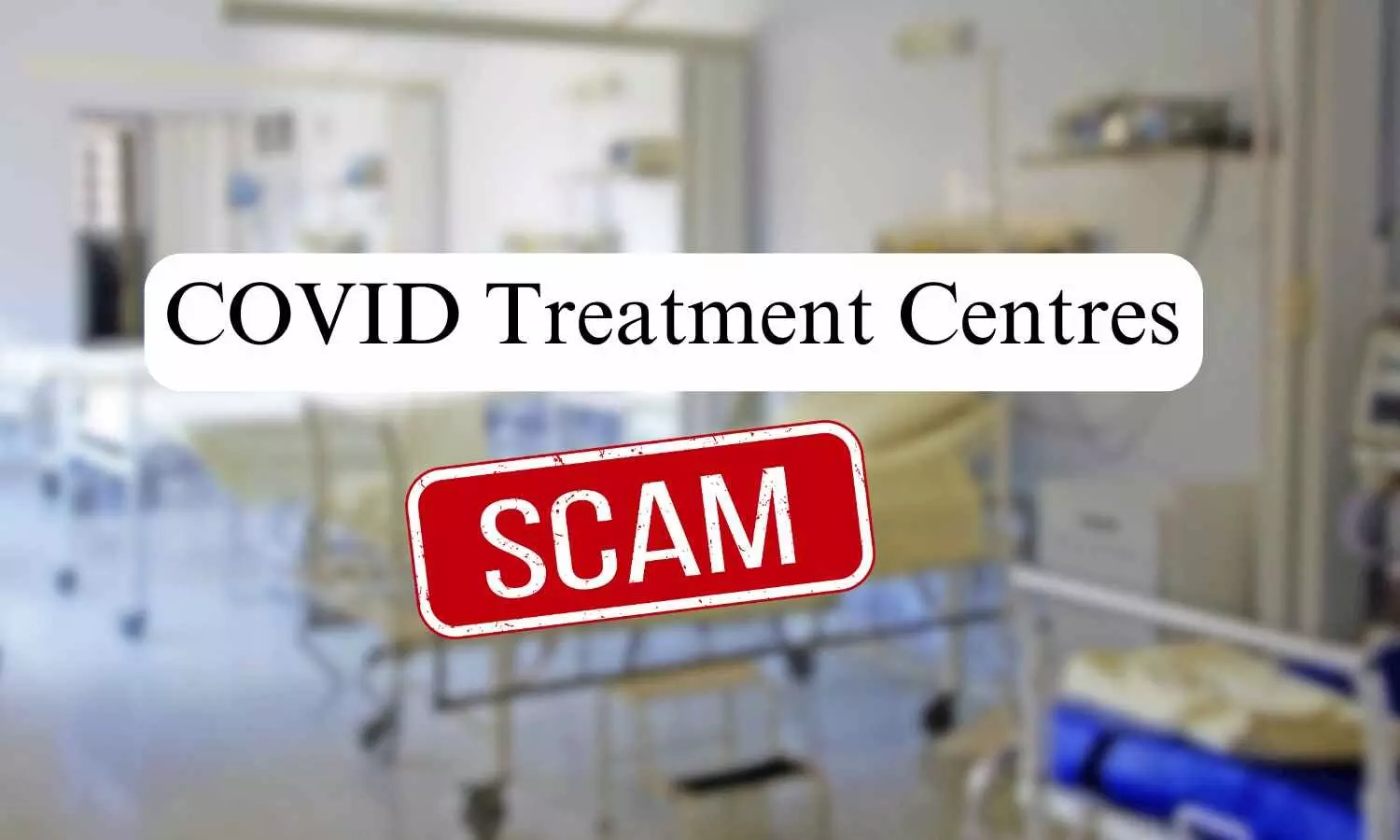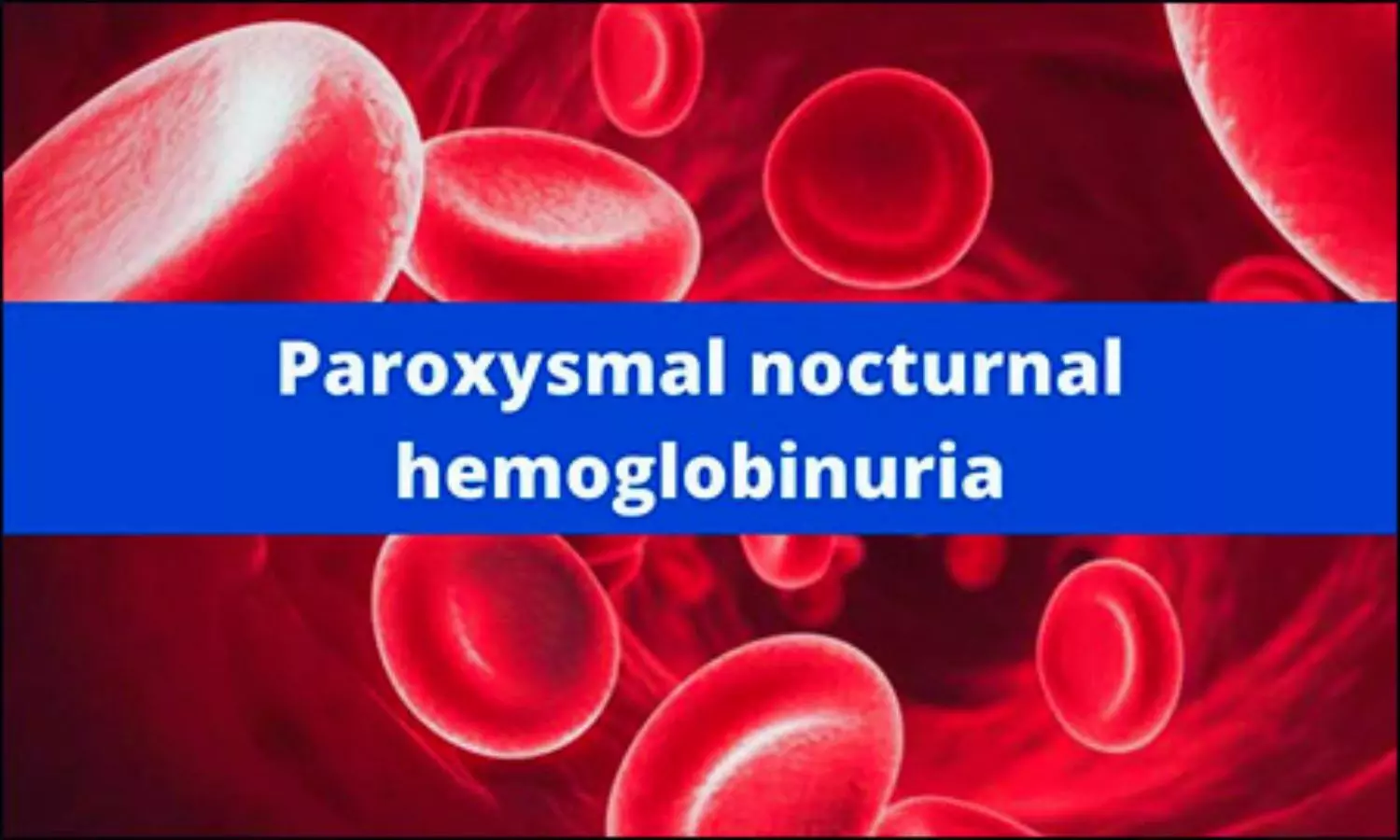Leading AI chatbots show dementia-like cognitive decline in tests, raising questions about their future in medicine
Powered by WPeMatico
Powered by WPeMatico
Powered by WPeMatico
Powered by WPeMatico
Powered by WPeMatico
Powered by WPeMatico

Mumbai: The Enforcement Directorate (ED) has named four more individuals as accused in the alleged COVID treatment centres scam, noting their involvement in the “generation, layering and parking of the proceeds of crime”.
Businessman Sujit Patkar, an aide of Shiv Sena (UBT) MP Sanjay Raut, is a prime accused in the case and is currently in judicial custody.
According to the PTI report, the Enforcement Directorate (ED), probing the case, recently filed a supplementary chargesheet against four persons – Sunil Kadam, Sonu Bajaj, Sanjay Parab and Ravikant Singh.
Special court judge A C Daga took cognisance of the chargesheet on Monday and issued summons to all the accused.
The court asked them to appear before it on December 31.
Also Read:BMC’s COVID Centre Scam: ED attaches assets worth over Rs 12 cr
The court said that upon perusal of the supplementary complaint, it appears that accused Kadam appears to be involved in generation and layering of the proceeds of crime amounting to Rs 32.44 crore in collaboration with the partners of M/s Lifeline Hospital Management Services.
He was instrumental in securing the tender fraudulently by submitting false and incomplete documents by M/s Lifeline Hospital Management Services, by using his influence, though he is not a partner of the said firm as per the documents, the order said.
It said that Kadam has received total proceeds of crime amounting to Rs 1.81 crore into his personal account, which has been utilised for purchase of property in the name of close associate Sonu Bajaj.
Bajaj has assisted accused Kadam in parking the ill-gotten money by purchasing a property in her name by using the proceeds of crime, the court said, citing the ED’s chargesheet.
It added that two other new accused in the case also played a key role in layering of the proceeds of crime.
Considering the role played by each of the accused, “it appears that they were involved in generating, layering and parking of the proceeds of crime”, the court said.
“All accused persons appear to have been involved in this process of money laundering and ultimately tried to make tainted money untainted. Hence, there is sufficient ground to issue a trial against them under the provisions of PMLA,” it added, news agency PTI reported.
Following the fresh chargesheet, there are now 11 accused, including Patkar, in the case.
The ED has stated that Patkar “due to his proximity with a politically exposed person” managed to get a contract for his partnership firm Lifeline Hospital Management for supplying medical staff at Dahisar and Worli Jumbo COVID facilities during the pandemic.
The probe agency has alleged that obtaining the tender based on incomplete and wrong records and receiving payments from the civic body fraudulently resulted in the generation of proceeds of crime amounting to Rs 32.44 crore to Lifeline Hospital Management Services.
Also Read:BMC COVID centre scam case: ED arrests Sanjay Raut’s aide, civic doctor
Powered by WPeMatico

Belagavi: The Karnataka Health Department currently has 32,870 vacant positions out of a total of 69,915 sanctioned posts, with 37,045 positions already filled. Half of the existing vacancies have been filled on a contractual basis, and ongoing efforts are focused on filling the remaining posts through a combination of contract appointments and direct recruitment in phases.
Health Minister Dinesh Gundu Rao confirmed the staffing situation during the Legislative Council session in Belagavi on Monday. The announcement came in response to
questions from member M.G. Mule about the current staffing situation. The Minister also highlighted that no more than 75% of Group D posts will be filled by contracts and outsourcing of the vacant posts, reports The Hindu.
Recruitment in taluk and
district hospitals will be done in consultation with Deputy Commissioners. The
Minister further mentioned that a proposal has been routed to the Finance
Department for filling the posts of specialist doctors and general duty medical
officers on a contractual basis, with conditions. The immediate plan is to
appoint 100 speciality doctors with postgraduate qualifications and 120 MBBS
doctors on a contract basis, with regular appointments to follow.
In addition, the Minister
added that the medical and dental graduates and postgraduates entering
compulsory service would be deployed to fill existing vacancies. The process of recruitment is underway to
recruit 400 pharmacy officers, 500 junior medical officers, 150 laboratory
technical officers, and 8 radiology imaging officers currently. The
verification of candidates’ original documents is ongoing, reports the daily.
To address staffing shortages and manpower depletion, 200 Junior Laboratory Technical Officers and 400 Pharmacy Officers will be temporarily outsourced until regular recruitment is conducted. Furthermore, the Minister mentioned that 320 posts
will be filled in the Kalyan Karnataka region, and a proposal seeking to fill 9,871
vacant positions with para-medical staff has also been forwarded to the Finance
Department, which might be carried out after the finance department’s clearance.
Powered by WPeMatico

UK: In a secondary analysis of the FINEARTS-HF randomized clinical trial, researchers found that finerenone, a novel non-steroidal mineralocorticoid receptor antagonist, significantly reduced the risk of heart failure (HF) events and cardiovascular death in both women and men with heart failure with mildly reduced or preserved ejection fraction (HFmrEF or HFpEF).
The findings, published in JAMA Cardiology, suggest that finerenone not only improves outcomes but also offers consistent safety and tolerability across both genders.
Heart failure with mildly reduced or preserved ejection fraction is more common in women, making the results of this study particularly significant for female patients. Traditionally, heart failure with reduced ejection fraction (HFrEF) has received more attention in clinical trials, leaving a gap in evidence for HFmrEF and HFpEF, conditions that are increasingly recognized as important contributors to heart failure-related morbidity and mortality, particularly in older populations.
Sex plays a role in the clinical presentation, outcomes, and treatment response in heart failure (HF) patients. However, there is limited knowledge regarding the safety and efficacy of finerenone treatment based on sex. To fill this knowledge gap, Misato Chimura, British Heart Foundation Cardiovascular Research Centre, University of Glasgow, Glasgow, United Kingdom, and colleagues aimed to evaluate the efficacy and safety of finerenone compared to placebo in both women and men.
For this purpose, the researchers conducted prespecified analyses in the phase 3 FINEARTS-HF trial, held across 653 sites in 37 countries. The trial involved adults aged 40 or older with symptomatic heart failure and an LVEF of 40% or higher, randomized between September 2020 and January 2023. Participants received either finerenone (20 mg or 40 mg) or placebo. The primary outcome was a composite of cardiovascular death and total heart failure events, including unplanned hospitalizations or urgent visits.
Key findings:
In this secondary analysis of the FINEARTS-HF randomized clinical trial, finerenone reduced the risk of the primary composite outcome, including total (first and recurrent) heart failure events and cardiovascular death, while also improving symptoms in both women and men.
“The study found that finerenone demonstrated similar tolerability in both genders. Given that heart failure with mildly reduced or preserved ejection fraction is more common in women, these findings highlight the particular relevance of finerenone’s consistent efficacy and safety for female patients,” the researchers concluded.
Reference:
Chimura M, Wang X, Jhund PS, et al. Finerenone in Women and Men With Heart Failure With Mildly Reduced or Preserved Ejection Fraction: A Secondary Analysis of the FINEARTS-HF Randomized Clinical Trial. JAMA Cardiol. Published online November 17, 2024. doi:10.1001/jamacardio.2024.4613
Powered by WPeMatico

A new study published in the Journal of Clinical Endocrinology and Metabolism showed that among type 2 diabetes mellitus (T2DM) patients with AKD, thiazolidinedione (TZD) showed a significant decrease in mortality, cardiovascular events, and adverse renal events. Over 422 million people suffer from diabetes (WHO 2023) throughout the globe, and by 2045, this prevalence may rise to 700 million. About 90% of people with diabetes are diagnosed with T2DM, which is caused by insulin insufficiency brought on by tissue insulin resistance and pancreatic β-cell malfunction.
Reduced estimated glomerular filtration rate (eGFR) < 60 mL/min/1.73 m² and/or structural kidney or urine abnormalities are characteristics of chronic kidney disease (CKD). By stimulating the peroxisome proliferator-activated receptor gamma (PPARγ) which is a nuclear transcription factor that controls many metabolic pathways, thiazolidinediones (glitazones), improve insulin sensitivity.
The function of thiazolidinedione in these individuals during the acute kidney disease (AKD) phase has not been well studied. In order to determine if utilizing TZD during AKD may lower the chance of significant negative effects in the future, Li-Yang Chang and colleagues carried out this investigation.
Prior to September 30, 2022, this research used the TriNetX platform to administer TZD to patients with type 2 diabetes mellitus (T2DM) within 90 days of receiving an AKD diagnosis. The risk of major adverse cardiovascular events (MACE), major adverse renal events (MAKE), and all-cause mortality are examples of clinical endpoints. Using 1:1 ratio propensity score matching (PSM), hazard ratios (HRs) and 95% CIs were computed.
TZD users were substantially less likely than those in the control group to experience an acute myocardial infarction, an intracerebral infarction, a major adverse cardiovascular event, or a major adverse renal event. However, there was no discernible decrease the combined risk of heart failure and death in TZD users.
According to subgroup studies, the advantages of using TZD were unaffected by hypertension, and while combining TZD with insulin, angiotensin-converting enzyme inhibitors, or angiotensin receptor blockers enhanced results, doing so with metformin had neutral effects.
Despite similar results for severe adverse cardiovascular and renal events, long-term TZD users had a higher mortality risk decrease than new users. The benefits of TZD usage continued long after stopping, according to landmark research. Overall, these results point to a possible advantage of using TZD to treat cardiovascular events in T2DM patients who also have AKD.
Reference:
Chang, L.-Y., Liao, H.-W., Chen, J.-Y., & Wu, V.-C. (2024). Enhanced Outcomes in Type 2 Diabetes Patients With Acute Kidney Disease Through Thiazolidinedione. In The Journal of Clinical Endocrinology & Metabolism. The Endocrine Society. https://doi.org/10.1210/clinem/dgae796
Powered by WPeMatico

Researchers have discovered that with the dual inhibition of C5 and factor D, patients with paroxysmal nocturnal hemoglobinuria (PNH) develop fewer breakthrough hemolysis (BTH) events. Findings from both the ALPHA and PEGASUS trials support treatment strategies on efficacy and safety, with additional danicopan use with ravulizumab or eculizumab showing a rare incidence of mild-to-moderate BTH. A recent study was conducted by Hubert S. and colleagues which was presented at the American Society of Hematology annual meeting.
PNH is an extremely rare blood disorder caused by intravascular hemolysis. If left unchecked, significant morbidity and mortality results from this process. Standard treatments such as the C5 inhibitor ravulizumab are targeted at controlling intravascular hemolysis, but in some patients, clinically significant extravascular hemolysis (csEVH) persists. An oral factor D inhibitor targeting the alternative complement pathway, such as danicopan, can be added for csEVH management. The ALPHA trial investigated danicopan’s effectiveness when combined with C5 inhibitors in PNH patients with csEVH, while the PEGASUS trial evaluated pegcetacoplan, a proximal complement C3 inhibitor, as monotherapy for PNH management.
Data from the ALPHA and PEGASUS trials were analyzed to assess BTH events, focusing on hemoglobin (Hb), lactate dehydrogenase (LDH) levels, and treatment actions. ALPHA included patients receiving stable doses of ravulizumab or eculizumab with csEVH (Hb ≤ 9.5 g/dL). PEGASUS recruited patients on eculizumab with Hb < 10.5 g/dL. ALPHA lacked a protocol-defined BTH definition, while PEGASUS defined BTH as new or worsening symptoms with LDH ≥ 2× the upper limit of normal (ULN).
Key Results
ALPHA Trial (Danicopan Add-On Therapy)
Over 2.5 years, 5 of 84 patients (6.0%) experienced ≥1 BTH event, with 7 events reported.
Exposure-adjusted BTH rate was 6.0 per 100 patient-years (PY).
Most events (85.7%) were mild or moderate, with Hb levels between 7.4–9.2 g/dL and LDH ≤ 2.2× ULN.
Severe BTH was reported in only one case (Hb 7.3 g/dL; LDH ≤ 2× ULN).
No transfusions, dose modifications, or treatment withdrawals were needed.
PEGASUS Trial (Pegcetacoplan Monotherapy)
During 48 weeks, 19 of 80 patients (23.8%) had ≥1 BTH event, and 26 events were recorded.
Exposure-adjusted BTH rate was 33.5 per 100 PY.
Events were moderate (14 events) or severe (12 events), with LDH levels reaching 18.3× ULN.
Hb levels dropped to <6.5 g/dL in five events.
11 patients (57.8%) required transfusions, 4 (21.1%) received eculizumab rescue, and 8 (42.1%) discontinued pegcetacoplan.
The ALPHA trial showed a highly reduced incidence and severity of BTH events compared to PEGASUS. The use of Danicopan as an adjunct had fewer and less serious BTH cases that remained self-managed without intervention, thereby establishing the effectiveness of dual inhibition in enhancing treatment outcomes in PNH patients. In contrast, pegcetacoplan monotherapy increases the risk of severe events of BTH, often requiring rescue strategies such as transfusions as well as discontinuation.
Hemolysis in PNH is dangerous, but dual inhibition of C5 and factor D with add-on danicopan therapy is a safe and effective strategy. The findings from the ALPHA trial underscore low BTH rates, mostly mild-to-moderate severity, and no treatment discontinuation or transfusion requirements. These results support dual inhibition as a viable approach for improving disease control and outcomes in patients with PNH.
Reference:
Schrezenmeier, H., Mahdi, M., Gasteyger, C., & De Coster, C. (2024). Breakthrough hemolysis events in patients with paroxysmal nocturnal hemoglobinuria: Data from danicopan and pegcetacoplan trials. Blood, 144(Supplement 1), 2694–2694. https://doi.org/10.1182/blood-2024-203195
Powered by WPeMatico
